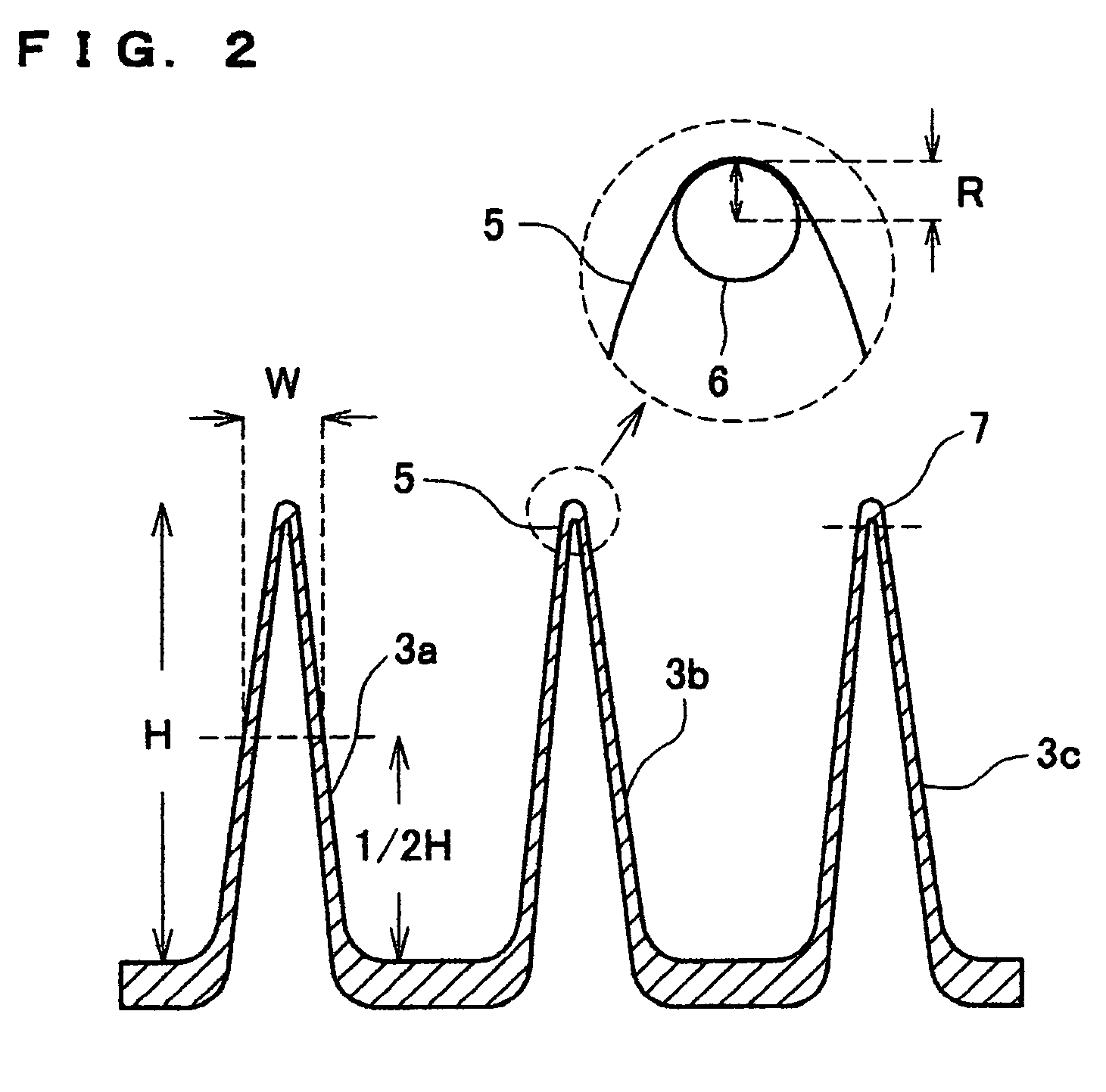Three-dimensional structure and method and apparatus for manufacture thereof
a three-dimensional structure and resin technology, applied in the field of three-dimensional structure made from resin, can solve the problems of unsuitable applications, unnecessarily large amount of valuable resources, high rigidity, etc., and achieve the effects of reducing waste, saving resources, and reducing environmental burden during waste treatmen
- Summary
- Abstract
- Description
- Claims
- Application Information
AI Technical Summary
Benefits of technology
Problems solved by technology
Method used
Image
Examples
example 1
[0057]High-density polyethylene (manufactured by Japan Polyolefin Co., Ltd., J-REX□HD, KL371A, MFR 1.0, density 0.956 g / cm3, deflection temperature under load 65° C.) was used as a starting material resin. This resin was extrusion molded at 275° C. from a T die, and guided to a three-dimensional structure molding process shown in FIG. 5, so as to obtain a sheet with a thickness of 300 μm in a molded state. Two sets of molds combining four commercial pinholders for IKEBANA (flower arrangement) were used as the substrates 21, 22 and needle-like dies 22, 23 shown in FIG. 5. The diameter of the needle-like dies of the pinholders was 1.35 mm, the pitch was 3.7 mm, and the height was 13 mm. Those two molds were set so that the tips thereof faced each other, a molten resin sheet molded from a T die was sandwiched between the molds, and the needle-like dies were engaged so as to thrust the resin sheet. The temperature of the molten resin sheet at this time was 232° C. A molding cooled by th...
PUM
| Property | Measurement | Unit |
|---|---|---|
| height | aaaaa | aaaaa |
| thickness | aaaaa | aaaaa |
| width | aaaaa | aaaaa |
Abstract
Description
Claims
Application Information
 Login to View More
Login to View More - R&D
- Intellectual Property
- Life Sciences
- Materials
- Tech Scout
- Unparalleled Data Quality
- Higher Quality Content
- 60% Fewer Hallucinations
Browse by: Latest US Patents, China's latest patents, Technical Efficacy Thesaurus, Application Domain, Technology Topic, Popular Technical Reports.
© 2025 PatSnap. All rights reserved.Legal|Privacy policy|Modern Slavery Act Transparency Statement|Sitemap|About US| Contact US: help@patsnap.com



